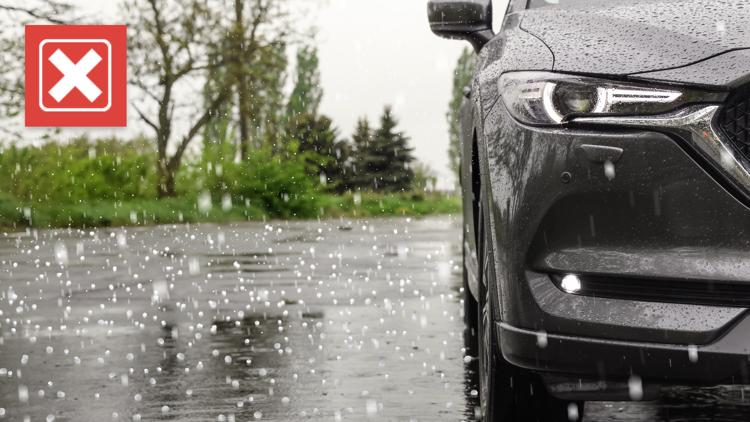In many places, winter weather is in full swing. With millions of Americans expected to travel over the holidays, some people are wondering the best ways to stay safe behind the wheel.
VERIFY reader Don reached out to ask if it's safe to use cruise control in icy conditions.
THE QUESTION
Is it safe to use cruise control on icy roads?
THE SOURCES
- Dan Strollo, executive director of In Control, a crash prevention training organization
- Progressive
- Kia
- Iowa Department of Transportation
- AAA
- National Highway Traffic Safety Administration
THE ANSWER
No, it is not safe to use cruise control on icy roads.
WHAT WE FOUND
Driving in icy conditions can be dangerous, as the ice can cause a car to slide uncontrollably. But with cruise control turned on, driving on ice can be even more risky.
Cruise control is a setting that allows a driver to “set a speed for your car to maintain even if you take your foot off the gas,” Progressive says. It's typically used for “long drives on large, straight roads with cars traveling at a relatively constant speed,” according to Progressive.
The Iowa Department of Transportation, Kia and Progressive all say that using cruise control in wet and slippery conditions, such as icy weather, is dangerous.
In general, people should avoid using cruise control if it's raining or the roads are wet. According to AAA, "cruise control set at too fast a speed could cause the vehicle to hydroplane when it encounters standing water."
AAA adds that the wet conditions can negatively impact cruise control's ability to maintain a constant speed, resulting in potential skids or spins. With cruise control on, the car is not completely in the driver’s control as it continues to accelerate at the same speed, making it harder to quickly gain control in dangerous road conditions.
“If you’re driving and you suddenly felt your vehicle start to slide, you would come off the acceleration,” Dan Strollo says. But with cruise control on, “it's going to keep trying to accelerate the vehicle.”
Being in complete control of the car’s speed can be essential in preventing a crash. When a vehicle loses traction, the ability to reduce speed is compromised, Strollo explains.
For example, if you’re on an icy bridge with cruise control turned on and your tires start to spin, even when you get to dry pavement your tires could still continue to spin faster out of control.
But if your tires start to spin while driving on a bridge with full control of the speed, Strollo says you can come off the acceleration yourself and accelerate again once you’re on dry pavement. Strollo notes that this action is safer than cruise control because “you controlled it, you gradually did it, as opposed to the wheels spinning too fast before they even hit the dry pavement.”
Suddenly grabbing traction can be jarring and “could lead to losing control,” Strollo adds.
Besides not using cruise control, the National Highway Traffic Safety Administration shares tips for safe driving in icy conditions, including increasing “your following distance enough so that you’ll have plenty of time to stop for vehicles ahead of you.”
When driving in inclement weather, you should be more engaged and in control of the speed, Strollo says. He also recommends checking to make sure you have enough tread on your tires and to get winter tires if regularly driving in icy conditions.
AAA says to make sure to “adjust your speed down to account for lower traction when driving on snow or ice.”



